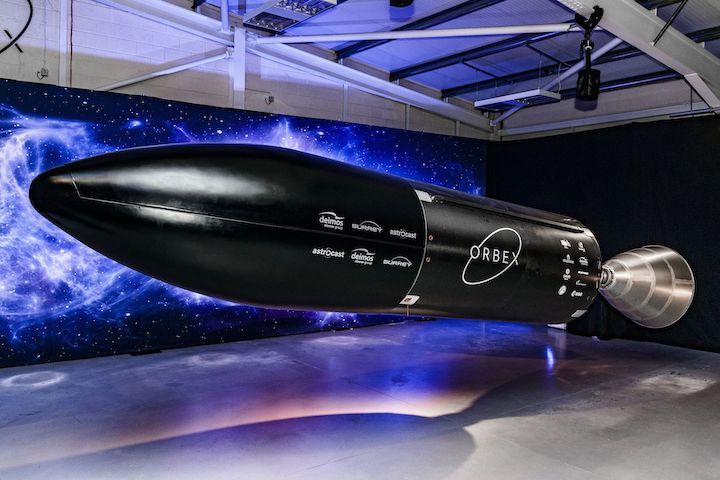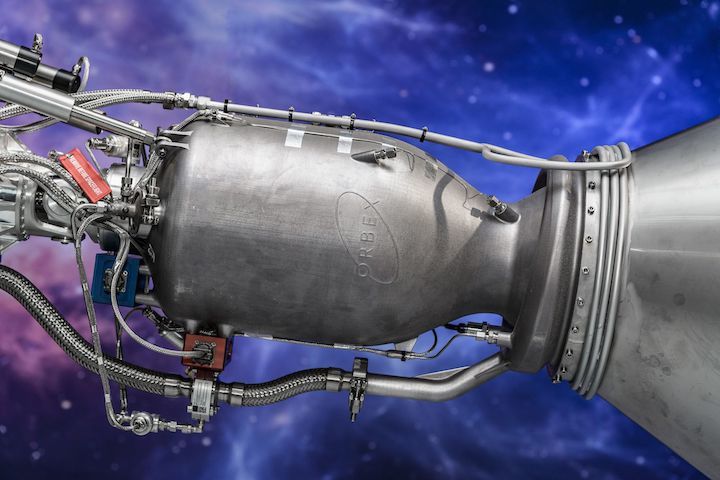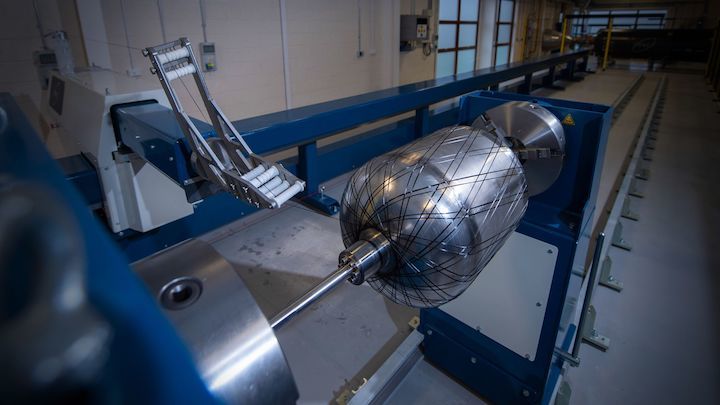It also revealed its new Mission Control Centre that will be used to monitor orbital rocket launches from Scotland and other sites, as well as engine tests from its two propulsion test sites.
At its Scottish factory, Orbex has installed several new production systems, including one of the largest carbon fibre winding machines in Europe.
This 18-metre long machine automates the rapid weaving of intricate mixes of materials to build the main rocket structures.
Orbex has worked for several years to investigate and perfect the carbon fibre blend used in the patented construction of its Prime rocket.
Clyde Space
Glasgow-based and recognised as a world-leading innovator and supplier of ‘CubeSats’ - miniaturised satellites for space research - and small satellite systems. Over the last decade, it has developed highly manufacturable solutions - perfect for the next generation of low cost, highly reliable network of satellites.
Alba Orbital
Also based in Glasgow, it wants to get more people building and launching its own satellites. It provides a hub of support for the fledgling class of PocketQube miniaturised satellites by not only building platforms, but providing parts and launch expertise to companies, universities and space agencies around the world. While they currently employ just 15 people, they are the largest picosat company in the world.
Spaceport Scotland
An initiative made up of various companies and organisations in the north to stimulate interest in the possible use of a Scottish location for the UK’s first operational spaceport.
It all adds up to a significant global opportunity for Scotland to capitalise on, and intellectual property (IP) data - a barometer of innovation - represents a great measure of that opportunity.
Skyrora
The Edinburgh-based firm is developing rocket engines using hydrogen peroxide and kerosene as a propellant instead of liquid oxygen. It plans to launch a satellite from Newquay in Cornwall but ultimately the intention is to send them into orbit from the planned space port at Sutherland.
Astrosat
Not in the field of space exploration but this Musselburgh firm harnesses data gleaned from satellites to bring benefits back to earth. It works with the European Space Agency and UK Space Agency.
Due to its choice of design and materials, Orbex Prime will be 30 per cent lighter than similar sized rockets, allowing acceleration from 0 to 1,330 km/h in just 60 seconds.
To make large rocket structures and components ready for spaceflight, Orbex uses a full-scale ‘autoclave’ which uses high temperatures and up to seven times atmospheric pressure to help carbon fibre composites bond solidly.
In just a few hours, these machines can process large rocket parts, such as main stage fuel tanks, to create a strong and reliable structure that is ready for the extreme conditions of space.
Some of these carbon fibre structures can tolerate massive pressures - in some cases up to 500 times atmospheric pressure.
Earlier this year, Orbex revealed how it was using 3D printing to create what are currently the world’s largest single-piece 3D printed rocket engines.
3D printing allows the integration of dozens of tiny design details and features without requiring additional processing time. Orbex is able to 3D print a complete rocket engine in just five days.
“We’re creating rockets in a way that hasn’t been done before,” said Chris Larmour, Orbex CEO.
“The whole point of NewSpace - private enterprise getting involved in spaceflight - is to provide faster, better and cheaper access to space. Burning through hundreds of millions of dollars on robotic assembly lines or hundreds of staff to produce heavy, metal rockets is an antiquated approach. Building a modern space business means updating the manufacturing ethos to be faster, more agile and more flexible. That’s what we’re doing here at Orbex.”
Fromits Mission Control Centre, flight controllers will have access to numerous data streams from the launch vehicle during lift-off and flight, allowing remote command and control.
Today, the Mission Control Centre is used to monitor engine tests and simulate flight operations. Orbex has two rocket engine test sites, one in Denmark and one at a secure location in the UK.
Prime is expected to be the first rocket to take off from the proposed spaceport in Sutherland.
On August 1, 2019, Orbex’s partner, Highlands and Islands Enterprise (HIE) confirmed that it had signed a 75-year lease option with landowners, the Melness Crofters Estate, to build and operate a spaceport on its land.
The designs for the spaceport, including the eco-friendly Launch Operations Control Centre have been released as part of a public consultation ahead of a formal planning request, expected before the end of 2019.
“Many satellites are now as small as a smartphone,” said Larmour. “Our goal is to service this new market by making smaller, more efficient launch vehicles with a tiny CO2 footprint and zero orbital debris. We want to eliminate waiting time by launching on a regular timetable, with massively reduced costs and a more agile, modular approach. We can only do that be rethinking how we do it, rather than copying the past.”
Quelle: Insider Publications Ltd




